The Expected One (Magdalene Line Trilogy, #1) by Kathleen McGowan.
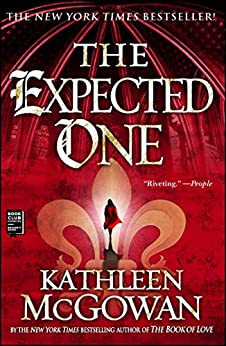
Review by Marcy Theobald : What food for thought! This is the fictional story of a writer/professor who goes on a journey that leads her to discover the lost Gospel of Mary Magdalene, which the author of this novel suggests is real and was discovered about 15 years ago in France in a location where many historians suggest Mary lived out the last 30 years of her life. Within this book, the author includes what she claims is actual translations from the Arques Gospel (Mary’s Gospel). Through the Gospel we learn that Mary was married to Jesus (her second marriage) and they had two children. Moreover, we learn what Jesus was like on a more human level — so full of life and love. Even the Catholic Church today has reversed its position on Mary Magdalene as a prostitute, a title given to her in 591 by Pope Gregory the Great. In 1969 the Church proclaimed that she wasn’t the great sinner as the Pope suggested, but instead was one of Jesus’ most celebrated disciples. This reversal comes a overly late, in my opinion.
Many historians and scholars know that in 285 AD when today’s Bible was assembled, the priests had more than 40 gospels to choose from to illustrate Jesus’ teachings, but only chose four. Further, in the Bible they downplayed female roles in history. If they did include women, it was generally to illustrate women’s sinning nature (Mary Magdalene as a prostitute, Salome who requested John the Baptist’s head on a platter, Heriodias who came to be Herod’s wife through adultery, to name a few).
When the Bible was assembled one of the gospels that was put aside was the Gospel of Judas, a translations of which was unearthed in the 1970’s but wasn’t identified and translated into English until the past decade. This Gospel, a Coptic translation of the original confirmed by carbon dating to be written around 280 AD plus/minus 50 years, tells a very different version of Judas’ role in the days leading up to Jesus’ crucifixion. In order for God’s will to be carried out, Jesus planned his arrest very carefully to avoid rioting and violence. Therefore, he asked one of his most trusted disciples, Judas, to go to the Romans and bring them to Jesus in the garden. According to the Gospel of Judas, Jesus didn’t tell anyone but Judas, therefore Judas’ actions were seen by the others as traitorous. Judas, grief stricken by the events that followed, was dead within a day of the crucifixion by, most say, his own hand.
I make the reference to the Gospel of Judas for two reasons. First, it lends hope to the possibility that the Arques Gospel of Mary Magdalene exists, not to mention the dozens of other Gospels whose existence is only known to the Vatican or those that haven’t been unearthed yet. I truly believe that other accounts exist of Jesus’ life were or are suppressed for political, financial and/or religious reasons. The second reason is that within the Argues Gospels, according to this author, Mary makes a reference to Judas and his role in Jesus’ arrest, corroborating the same story found in the Gospel of Judas.
I found this book utterly fascinating. Moreover, it was an enjoyable read and a true page-turner. In the afterward, the author, Kathleen McGowan, makes a suggestion that the road travelled by our fictional heroine is the path that she herself followed. Is she the Expected One? I would love to know. But moreover, if it proves true — if the Arques Gospel is released to the public — that Jesus was in fact married (as the vast majority of Jewish leaders were in Jesus’ time), I would welcome the truth. It would, in fact, make Him more human and accessible to me.
I’m looking forward to reading the next book in this series, The Book of Love.
Arques, France
The village of Arques in the rugged and mysterious southwestern region known as the Languedoc. The Languedoc was a mountainous land filled with mysticism. Local legends of buried treasure and mysterious knights dated back hundreds, even thousands, of years.


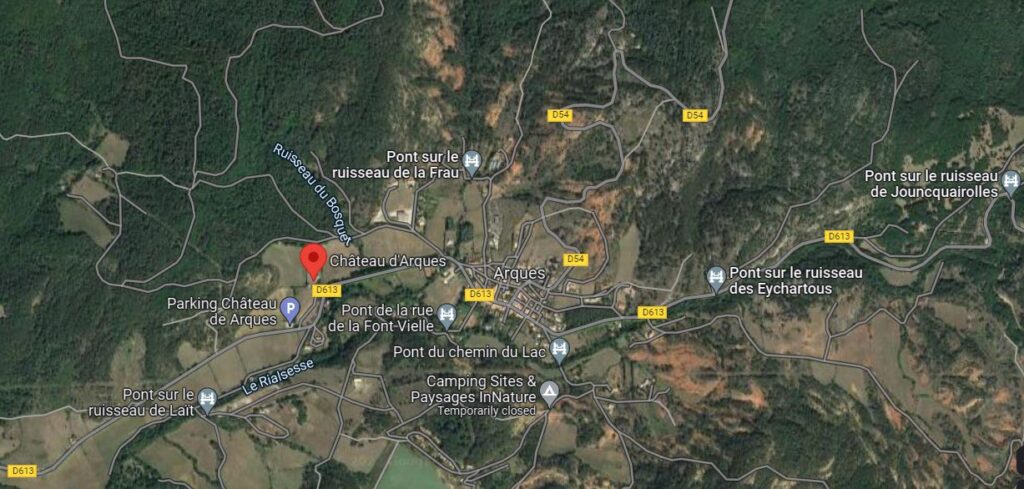
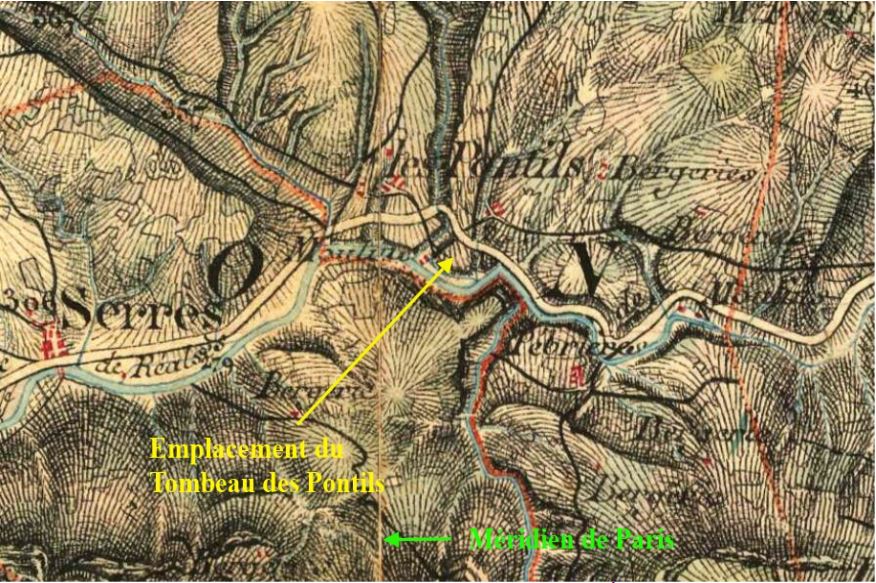
Nicolas Poussin and the Grail


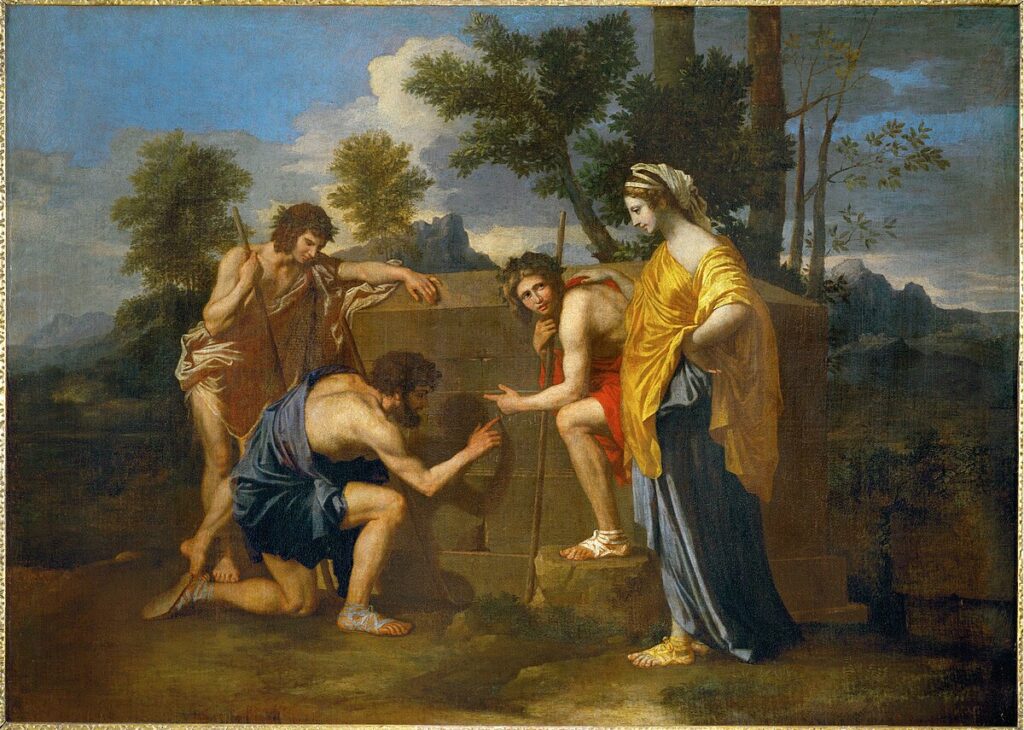
Et in Arcadia ego (also known as Les bergers d’Arcadie or The Arcadian Shepherds) is a 1637–38 painting by Nicolas Poussin (1594–1665), the leading painter of the classical French Baroque style. It depicts a pastoral scene with idealised shepherds from classical antiquity, and a woman, possibly a shepherdess, gathered around an austere tomb that includes this inscription. It is held in the Louvre. Poussin painted two versions of the subject under the same title. His earlier version, painted in 1627, is held at Chatsworth House. An earlier treatment of the theme was painted by Guercino circa 1618–1622, also titled Et in Arcadia ego.


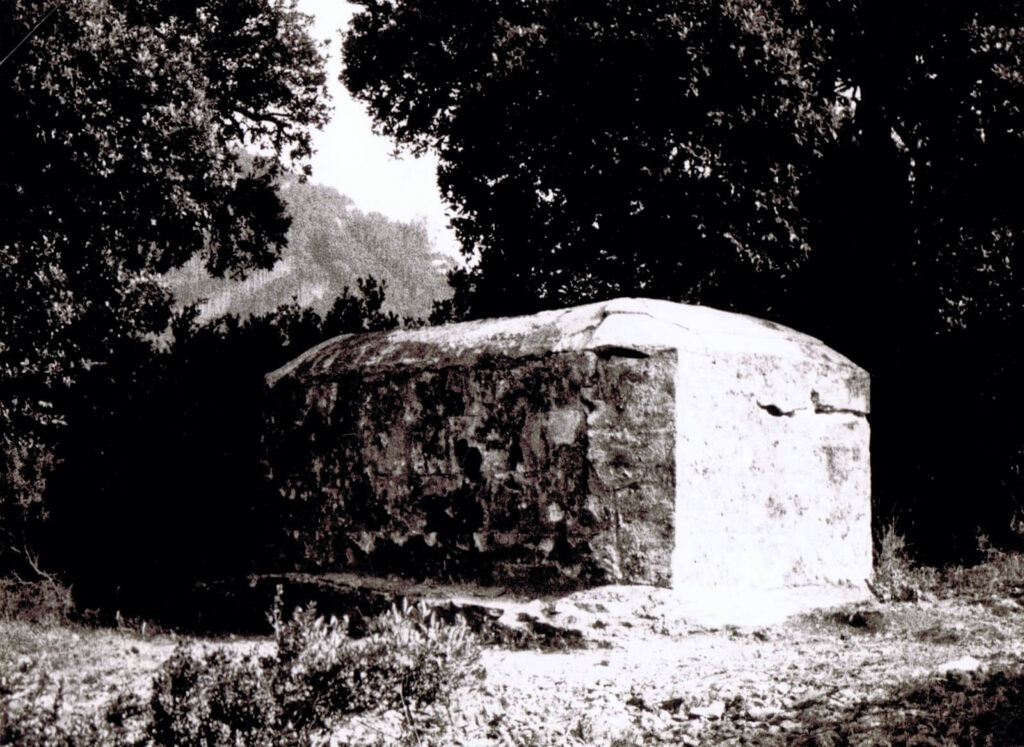


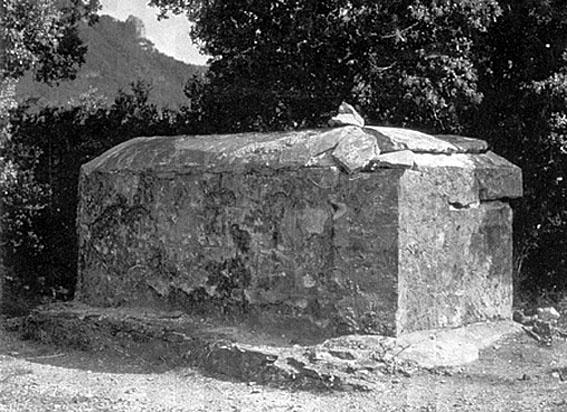
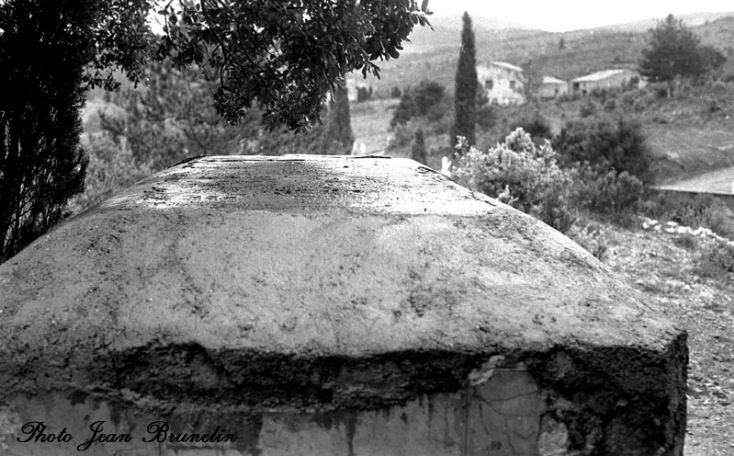

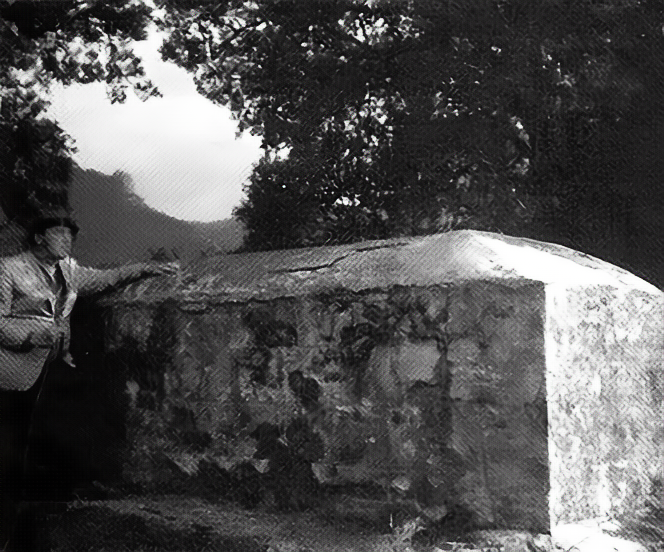





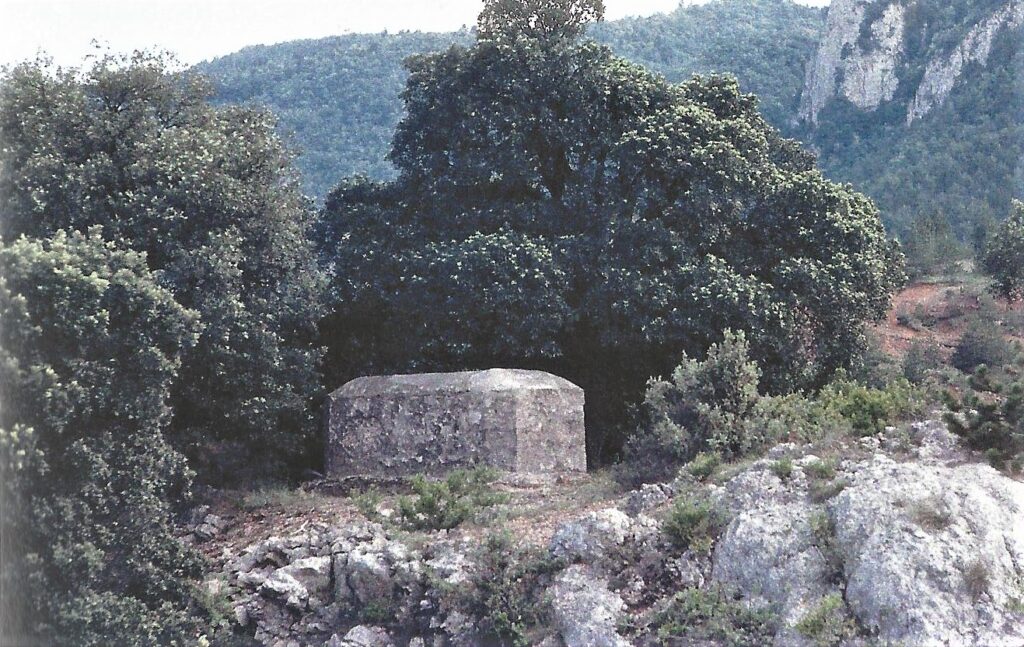
Emily Rivarès Lawrence (1863-1932), an American of French origin, purchased the Les Pontils estate in 1921. She moved there with her grandmother, Marie Rivarès (1843-1922) and her son Louis Bertram Lawrence (1884-1954). The body of Marie Rivarès was originally buried in an ordinary grave. When Emily Rivarès Lawrence died in 1932, she was buried in a parallelepiped tomb and the remains of Mary Rivarès were exhumed from her original grave and transferred into the same tomb – with two mummified cats – that was built by Louis Lawrence. Louis Lawrence died in poverty in Carcassonne on 25 July 1954 having squandered his maternal inheritance (buried in Carcassonne, his grave no longer exists).
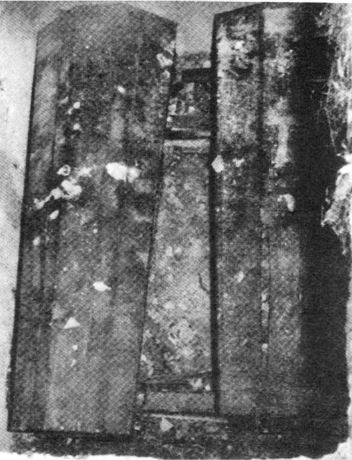


The claim that Louis Lawrence’s Tomb at Les Pontils was the “prototype” for Nicolas Poussin’s painting “Les Bergers d’Arcadie”, was first introduced into the corpus of Rennes-le-Château mythology by Jean Pellet and Gérard de Sède in their article “Le Secret de Nicolas Poussin” (Le Grand Albert, Journal des Sciences Secrets, Number 9, pages 46-48, 1972).
The Louis Lawrence Tomb was destroyed by the owner of Les Pontils in 1988, after he’d had enough of treasure hunters trespassing on his property..
The Tomb of Louis Lawrence remains at the forefront of Rennes-le-Château mythology and has inspired [fantasy] links with Shugborough Hall and Oak Island, Nova Scotia among its psychedelic kaleidoscope of phantasmagorial colours. By Paul Smith, 17th May 2022.

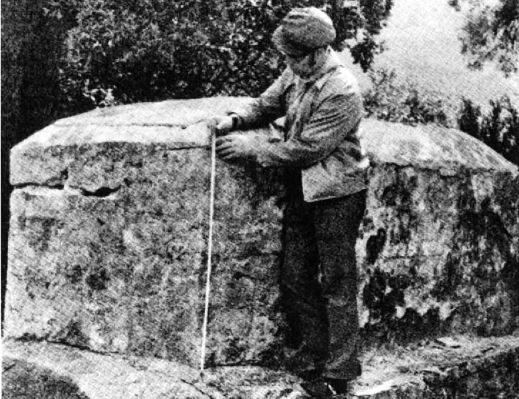
From Mysteries and Secrets of the Templars : The Story Behind the Da Vinci Code (2005) by Lionel and Patricia Fanthorpe – The table-tomb near Rennes – resembling the ones in the painting and the carving at Shugborough – was recently situated at Arques. The modern part of it was barely a century old, but it had been erected by the Lawrence family, who were originally from America, over a much older subterranean tomb that could well have been familiar to medieval Knights Templar. We examined this tomb thoroughly on our visits to Rennes-le-Château, even photographing the interior.
Other Rennes researchers have recorded finding a strange wheel-and-chain device in the older part of the Tomb of Arques, deep below the relatively recent table-top. The Tomb of Arques stood close to the River Sals, and this leads to another theory regarding its original purpose.
The foundations of the ancient church dedicated to Mary Magdalene at Rennes are believed to be Visigothic. It was the Visigoths’ practice to bury their leaders below the beds of rivers. The river would be dammed; a tomb would be dug in its bed and made watertight. The dead ruler would then be laid there with his armour, his weapons, his horse and his treasure. The tomb would next be covered to make it indistinguishable from the rest of the riverbed. Finally, the dam would be destroyed, allowing the waters to flow back over the tomb as though nothing had ever disturbed the river’s natural course. It created an almost perfect hiding place.
If some great and important person from Rennes-le-Château’s Visigothic past or even earlier had been buried in the River Sals, might not the mysterious Tomb of Arques at nearby Pontils have pro- vided a secret route into that sealed, submerged tomb?
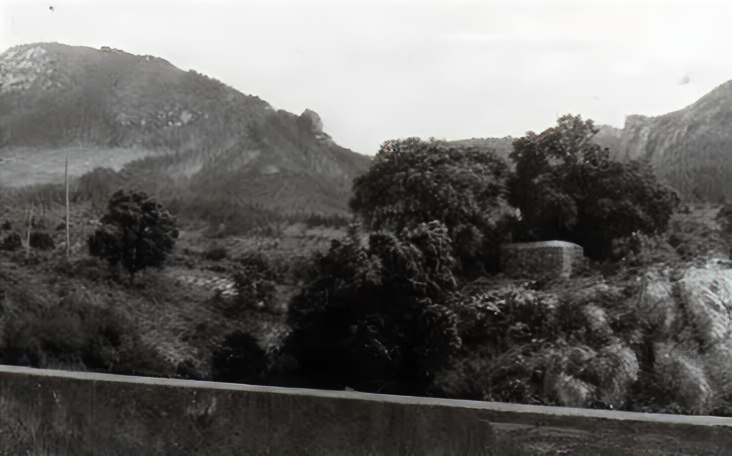

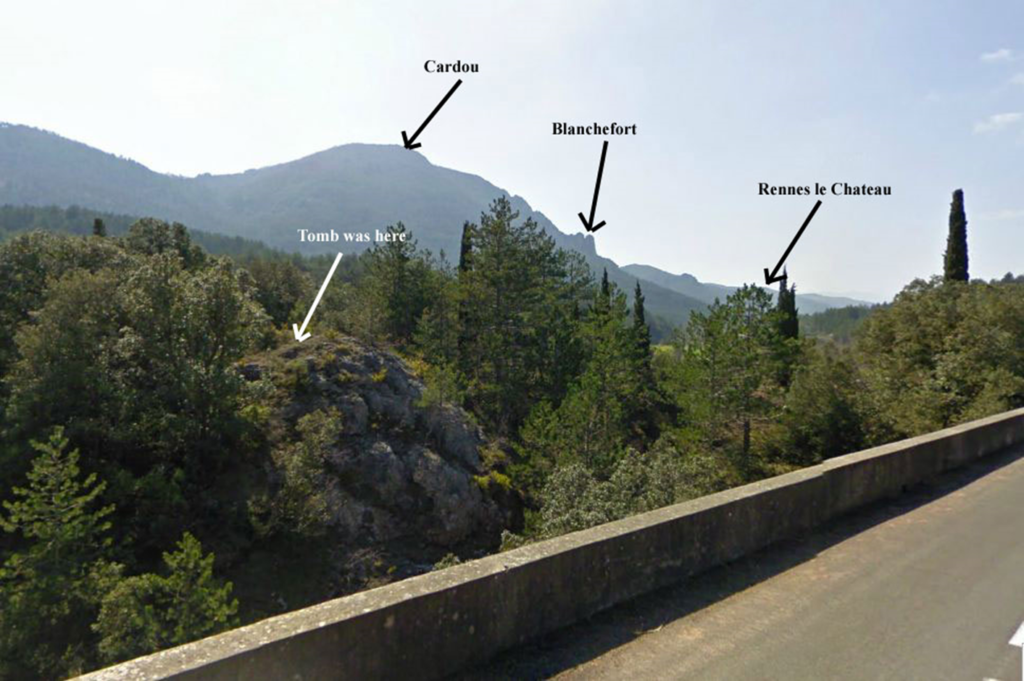
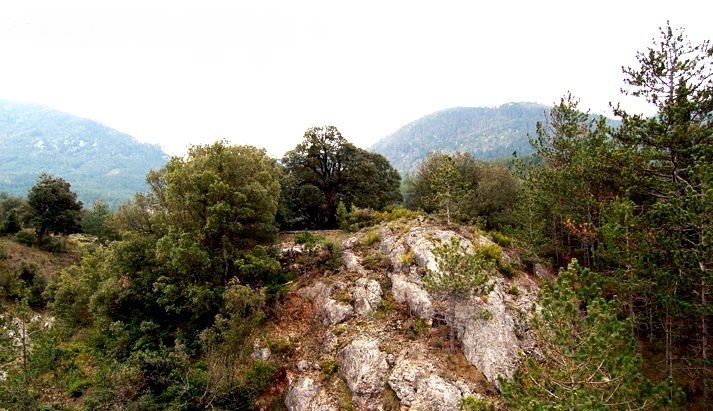
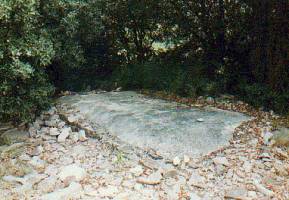


https://www.youtube.com/watch?v=EznTUTZuepk&ab_channel=AshramsofIndia
The Secret of the Templars : Documentary in four episodes: The Lost Treasure, Guardians of the Grail, Only for the Initiated, Exploration of the Invisible. © copyright : Erling Haagensen Production 1993 – 2021. This material is based on research by Henry Lincoln and Erling Haagensen. Script and narration by Henry Lincoln – Produced and directed by Erling Haagensen.
PHILIPPE BRUNEL Rennes-le-Château Une Aventure Cinématographique pour la sortie Les Secrets du Razès
Three BBC2 Chronicle documentaries about Rennes-le-Château, written and presented by Henry Lincoln.
The Arques Gospel of Mary Magdalene from The Expected One (Magdalene Line Trilogy, #1) by Kathleen McGowan.
…All these years later and it is no easier to write of Judas Iscariot than it was in the dark days. Not because I hold any judgment against him, but rather because I do not.
I will tell the story of Judas and hope to do so with justice. He was a man uncompromising in his principles, and those who follow us must know this: he did not betray those — or us — for a bag of silver. The truth is that Judas was the most loyal of the twelve. I have had so many reasons for grief these years past, and yet I think there is but One whom I mourn more than Judas.
There are many who would have me write harshly of Judas — to condemn him as a betrayer, as a traitor, as one who was blind to the truth. But I can write none of those things for they would be lies before my pen touched the page. Enough lies will be written about our time, God has shown me that. I will not write more.
For what is my purpose, if not to tell the whole truth of what occurred then?
THE ARQUES GOSPEL OF MARY MAGDALENE, THE BOOK OF DISCIPLES
…Much will be said and written in time to come of Simon, the Fisher of Men. Of how he was called the rock, Peter, by Easa and myself while the others called him Cephas, which was natural in their own tongue. And if history is just, it will tell of how he loved Easa with unmatched power and loyalty.
And much has already been said, or so I am told, about my own relationship with Simon-Peter. There are those who called us adversaries, enemies. They would have it be believed that Peter despised me and we fought for the attention of Easa at every turn. And there are those who would call Peter a hater of women — but this is an accusation that can be applied to no one who followed Easa. Let it be known that no man who followed Easa did ever belittle a woman or underestimate her value in God’s plan. Any man who does so and claims Easa as teacher speaks a lie.
It is untrue, these accusations against Peter. Those who witnessed Peter’s criticism of me do not know of our history or from what source come his outbursts. But I understand and will not judge him, ever. This, above all else, is what Easa has taught me — and I hope he taught it as well to the others. Judge not.
THE ARQUES GOSPEL OF MARY MAGDALENE, THE BOOK OF DISCIPLES
…I have known Peter since my earliest memories, as his father and mine were friends, and as he was very close to my brother. The temple at Capernaeum was near to the home of Simon-Peter’s father and it was a place we visited often as children. I remember playing a game there, along the shore. I was far younger than the boys and I often played alone, but the sound of their laughter as they wrestled with each other is something I can still remember.
Peter was always the more serious of the boys, his brother Andrew having a lighter heart. And yet there was humour in both of them when they were young. Peter and Andrew lost that lightness entirely after Easa was gone, and they had little patience for those of us who clung to it for survival.
Peter was much like my own brother in that he took his family responsibilities very seriously, and as he grew into manhood, he transferred that sense of responsibility to the teachings of The Way. He had a strength and singleness of purpose that was unmatched by any but the teachers themselves — this is why he was trusted so highly. Yet as much as Easa taught him, Peter struggled against his own nature more ferociously than most people would ever know. I believe that he gave up more than the others to follow The Way as it was taught — it required more of himself, more internal change. Peter will be misunderstood and there are those who bear him ill. But I do not.
I loved Peter and trusted him. Even with my oldest son.
THE ARQUES GOSPEL OF MARY MAGDALENE, THE BOOK OF DISCIPLES
…Sarah-Tamar comes often and reads my memories while I write. She has reminded me that I have not yet explained about Peter and what is known as his denial.
There are some who judged him harshly and would call him Peter in Gallicantu — Peter in Denial — but that is unfair. What those who pass judgment cannot know is that Peter did nothing but fulfil Easa’s wishes. I am told that some of the followers now say that Peter fulfilled a prophecy made by Easa, that Easa said to Peter, “You will deny me,” and Peter said, “No, I will not.”
This is the truth. Easa instructed Peter to deny him. It was not a prophecy. It was a command. Easa knew that if the worst happened, he would need Peter, of all his trusted disciples, to remain safe. Through Peter’s determination, the teachings would continue to spread across the world as Easa had always dreamed. And so Easa told him, “You will deny me,” but Peter in his torment said, “No, I cannot.”
But Easa continued, “You must deny me so that you will be safe and the teachings of The Way will continue.”
This is the truth of Peter’s “denial.” It was never a denial since he followed the orders of his teacher. Of this I am certain, for I was there and I witnessed.
THE ARQUES GOSPEL OF MARY MAGDALENE, THE BOOK OF DISCIPLES
…I must write more now of Nathaneal, who we called Bartolome, for I have been so moved by his devotion. Bartolome was little more than a youth when he first joined us in Galilee. And while he had been expelled from the house of his noble father, Tolma of Canae, it was clear upon meeting him that there was nothing of the incorrigible within him — surely, a cruel and unwise patriarch had misjudged the beauty and promise of such a precious and special soul, a beautiful son. Easa saw this as well, and as immediately.
Bartolome could be understood with a glance into his eyes. Outside of Easa and my daughter, I have never seen such purity and goodness through the eyes. His cleanliness was revealed within them — a soul that is pure and pristine. On the day he arrived in my house at Magdala, my tiny son climbed into his lap and stayed there for the remainder of the evening. Children are the greatest judges, and Easa and I smiled at each other across the table as we watched little John with his newest friend. John confirmed for us what we both knew upon looking at Bartolome — he was part of our family, and would be for eternity.
THE ARQUES GOSPEL OF MARY MAGDALENE, THE BOOK OF DISCIPLES
…Bartolome came to us through Philip, another of our tribe to be misjudged — and I will confess here that I was the first to misjudge him. He was long a follower of John, the Baptizer, and I knew of him from that association. Because of this, it took some time before I learned to trust Philip.
Philip was an enigma as a man — practical and educated. I was able to speak to him in the language of the Hellenists, in which I was also schooled. He came from nobility, having been born in Bethsaida, yet he had long chosen to live a life of utmost simplicity, denying himself the trappings of noble life. This trait he learned first from John. Philip was difficult and quarrelsome on the surface, but beneath this he was light and goodness.
There was nothing in Philip that would harm another living thing. Indeed, he was most severe about his eating habits and would not consume food that caused the suffering of any animal. While the remainder of our tribe fed on fish, Philip would not hear of it. He was unable to bear the idea of the tender mouths being torn by hooks, or the agony he felt they must suffer when trapped in nets. He had many quarrels with Peter and Andrew on this dilemma! I have thought about it often. Perhaps he was right, and his commitment to this belief is just one of the reasons I admired him.
I sometimes felt that Philip was much like the animals he so revered, those that protect themselves with spines or armour on the exterior, so that nothing is able to pierce the soft creature underneath. Yet he took Bartolome into his protection when he found him on the road and without a home. He saw the goodness in Bartolome, and brought that goodness to us.
After the Time of Darkness, Philip and Bartolome were my greatest comfort. They made the initial preparations with Joseph to quickly take all of us to safety in Alexandria, away from our own land. Bartolome was as important to the children as were the women. Indeed, he was the greatest comfort for little John, who loves all the men. But Sarah-Tamar adored Bartolome as much.
Yes, these two men deserve a place in heaven that is filled with light and perfection for all eternity. Philip became concerned only about protecting us and seeing us safely to our destination. I think he would have stopped at nothing, no matter what I asked of him. Had I told Philip that our destination was the moon itself, he would have tried everything in his power to get us there.
THE ARQUES GOSPEL OF MARY MAGDALENE, THE BOOK OF DISCIPLES
…Easa’s final suffering was pure torment for all of us, but it took a large part of Philip’s being to cope with it. He cried out in his sleep often and would not tell me why or allow me to help him. Finally the truth came to me from Bartolome, who advised that Philip didn’t want to harm me with such terrible memories. But Philip was haunted each night by the thought of Easa’s agony, by the way his wounds had been described.
The men give me honour as I am the only one of us who witnessed Easa’s passion.
During our time in Egypt, Bartolome became my most dedicated student. He wanted to know as much as possible and as quickly as possible. He was eager, hungry for it, like a man starving for bread. It was as if Easa’s sacrifice had created a hole in Bartolome that could only be filled by the teachings of The Way. I knew then that he had a special calling, that he would take the words of Love and Light out into the world, and that others would be changed by him. So each night when the children and the others slept, I taught Bartolome the secrets. He would be ready when the time came.
But I did not know if I would be. I had grown to love him as much as my own blood, and I feared for him — because his beauty and purity would not be understood by others the way it was understood by those who loved him best. He was a man without guile.
THE ARQUES GOSPEL OF MARY MAGDALENE, THE BOOK OF DISCIPLES
…I have not written yet about the Great Mother, the Great Mary. I have waited this long for I have often wondered if I had the words that would do justice to her goodness, her wisdom, and her strength. In the life of every woman, there will always be the influence and teachings of one woman who stands supreme. For me this could only be the Great Mary, the mother of Easa.
My own mother died when I was very small. I do not remember her. And while Martha always cared for me and attended to my worldly needs as a sister, it was Easa’s mother who provided my spiritual instruction.
She nurtured my soul and taught me the many lessons of compassion and forgiveness. She showed me what it was to be a queen and schooled me in the behaviours appropriate to a woman of our charted destiny.
When the time came for me to step into the red veil and become a true Mary, I was prepared. Because of her, and all that she gave me.
The Great Mary was a model of obedience, but hers was an obedience only to the Lord. She heard the messages of God with utter clarity. Her son had this same ability, and it is why they were set apart from others who had also come from noble birth. Yes, Easa was a child of the Lion, the heir to the throne of David, and his mother descended from the great priestly caste of Aaron. She was born a queen and Easa a king. But it was not mere blood that set them apart from all others; it was their spirit and the strength of their faith in God’s message to us.
Had I done nothing but walk in her shadow for all of my days, I would have been blessed to do so.
The Great Mary was the first woman in memory to be so gifted with clear knowledge of the divine. This was a challenge to the high priests, who did not know how to accept a woman of such power. But nor could they condemn her. The Great Mary had a blood lineage that was untainted, and her heart and spirit were beyond reproach. Her unblemished reputation was known across many lands.
Men of power feared her, for they could not control her. She answered only to God.
THE ARQUES GOSPEL OF MARY MAGDALENE, THE BOOK OF DISCIPLES
…I am told by many of this man who was called Paul. He caused great turmoil among the elect, and some journeyed the long distance from Rome as well as Ephesus to consult me on this man and his words.
It is not for me to judge, nor can I say what was in his soul as I did not encounter him in the flesh and did not look into his eyes. But I can say with certainty that this man Paul never met Easa and that I was most distressed to hear that he would speak for him and all that he taught of the light and goodness that is The Way.
There were many things about this man that I believed to be dangerous. He was once allied with the harshest followers of John, all men who held Easa in great contempt. They opposed the teachings of The Way as it was given to us by him. I am told that he was once known as Saul of Tarsus and was a man who persecuted the elect. He stood by while a young follower of Easa, a beautiful young man called Stephen who had a heart filled with love, was crushed with stones. Some tell that this Saul encouraged the stoning of Stephen. That man was the first after Easa to die for his faith in The Way. But he would be far from the last. Because of men like Saul of Tarsus.
There was much to beware of there.
THE ARQUES GOSPEL OF MARY MAGDALENE, THE BOOK OF DISCIPLES
…Those who informed me of Paul said that he spoke out against the role of women in The Way. This is the most certain proof that such a man cannot have known the truth of Easa’s teachings or the essence of Easa himself. Easa’s great reverence for women is well known to the elect, and I have served as proof of this.
No one can change that, save that they erase me from history completely.
I am told further that this Paul revered the means of Easa’s death, rather than the words that Easa spoke. This saddens me as a great loss of understanding.
This man Paul was imprisoned by Nero for a long period of time. I am told that he composed many letters to his faithful, giving teachings he claimed were from Easa. But those who came to me say he was not one to speak for The Way, that his teachings were false to our path.
I mourn for any man who was tortured and murdered in the dark realm of that monster Nero. And yet it fills me with fear. I fear that this man Paul will be seen as a great martyr for The Way, and that many will believe his false teachings to be those of Easa.
They are not.
THE ARQUES GOSPEL OF MARY MAGDALENE, THE BOOK OF DISCIPLES
…Perhaps I am the sole defender of the princess called Salome, but it is my duty to be so. I regret that I have left it so late, for she did not deserve her terrible fate. There was a time when it was death to speak of her and of her actions, and I could not defend her without risking the followers of Easa and the higher path of The Way. But like so many of us, she was judged by those who did not know the truth, or even an echo of it.
First, I will say this: Salome loved me, and she loved Easa even more. Given a chance, another time or place, or another set of circumstances, the girl could have been a true disciple, a sincere follower of The Way of Light. Thus, I include her in his Book of Disciples, for what she could have been. Like Judas and Peter and the others, Salome had a role carved out for her, and little chance to escape that role. Her name was etched in the stones of Israel, etched in John’s blood, and perhaps in some of Easa’s.
If hers were the rash, childish actions of youth — of a young person who does not think things through before she speaks — then she is indeed guilty of that. But to be remembered as she is — reviled and despised as a harlot who ordered John the Baptizer’s death — I think it is one of the greatest of all the injustices that I can remember.
On the Day of Judgment, perhaps she will forgive me.
And perhaps John will forgive us all.
THE ARQUES GOSPEL OF MARY MAGDALENE, THE BOOK OF DISCIPLES
…How does one begin to write about a time that changes the world?
I have waited so long to begin because I have always feared that this day would come and I would have to live it all again. I have seen it in my sleep these many years, over and over again, but it comes without leave to torment me. To bring it back with intention, has never been my choice. For while I have forgiven everyone who played a part in Easa’s suffering, forgiveness does not bring forgetting.
But that is as it should be, for I am the only one left who can tell what really came to pass during the days of darkness.
There are those who say Easa planned it, from the very first. This is not the truth. It was planned for Easa, and he lived it in his strength and his obedience to God. He drank from the cup that was handed to him with a courage and grace that has never been seen before or since, save in the form of his mother. Only His mother, the Great Mary, heard the call of the Lord with the same clarity, and only His mother answered that call with the same courage.
The rest of us were humbled to learn from their grace.
THE ARQUES GOSPEL OF MARY MAGDALENE, THE BOOK OF THE TIME OF DARKNESS
…Easa was the child of the prophecy, this was something everyone knew. And the prophecy brought with it a destiny that had to be fulfilled in an exact way. Easa did this; not for any glory to himself, but to make his role as the messiah easier to understand and embrace for the children of Israel. The closer Easa’s role came to fulfilling the exact nature of the prophecy, the stronger the people would be when he was gone.
But even for all of that, we did not expect it to happen the way that it did.
Easa entered Jerusalem on the back of an ass fulfilling the prophet Zechariah’s words about the arrival of the anointed one. We followed him with palms and sang hosannas. A great crowd joined us as we entered Jerusalem, and there was a sense of joy and hope in the air. Many followed us in from Bethany, and we were met by Simon’s compatriots, the Zealots. Even representatives of one reclusive Essene movement had left their desert dwelling to accompany us on this triumphant day.
The children of Israel rejoiced that this chosen one had come to liberate them from Rome and the yoke of oppression, poverty, and misery. This son of the prophecy had grown to be a man and a messiah. There was strength in our hearts, and in our numbers.
THE ARQUES GOSPEL OF MARY MAGDALENE, THE BOOK OF THE TIME OF DARKNESS
…Easa’s arrival was certainly noted by all of the authorities in Jerusalem, from the priests in the Temple to Pilate’s guard. The Romans were concerned about Passover. They feared uprising or rioting could be incited by any surge of Jewish sentiment or nationalism. And because there were Zealots with us, Pilate had no choice but to take note.
There were those among our own who had brothers in the priestly caste. They informed us that the high priest Caiaphas, the son-in-law of Jonathan Annas, who so despised us, held a council on “this idea of the Nazarene turned messiah.”
I have said my piece about this man Annas in the past, and here I will tell more of his deeds. But I do so with one warning: do not condemn many for the actions of one man. For the priestly caste is the same as all others — some are just and good in their hearts, some are not. There are those who followed the orders of Jonathan Annas in the dark days — priests and men. Some did so because they were obedient to the Temple, because they were good and righteous men, just as my own brother had been when he made that terrible choice.
Our people were misled by corrupt leaders, blinded to the truth by those who had a duty to give them something more. Some opposed us because they feared more Jewish bloodshed and wanted only to find peace for the people during Passover. I cannot fault anyone for that choice.
Should we condemn those who did not see the light? No. Easa taught us we must not shun them; we must forgive them.
THE ARQUES GOSPEL OF MARY MAGDALENE, THE BOOK OF THE TIME OF DARKNESS
…Many will find it shocking that I include the Roman woman Claudia Procula, the granddaughter of Augustus Caesar and the fosterling of Emperor Tiberius, among our followers. But it was not her status as a Roman that made her an unexpected member among us. It was that Claudia was the wife of Pontius Pilate, the same procurator who condemned Easa to the cross.
Of the many who came to our aid in the darkest days, Claudia Procula risked as much or more for Easa than anyone. Indeed, she had much more to lose than many.
But on that night when our lives crossed in Jerusalem, she and I became bonded in our hearts and in our spirits. We were linked from that day forward, as wives, as mothers, as women. I knew from her eyes that she would become a daughter of The Way when her time had come. I saw it there, the look of light that comes with conversion, when a man or woman sees God clearly for the first time.
And Claudia had a heart filled with love and forgiveness. That she stayed with Pontius Pilate through all that transpired is a sign of her faithfulness. Until his end, she suffered for him as only a woman who truly loves can do. This is something I know much about.
Claudia’s story has not yet been told. I will hope to do it justice.
THE ARQUES GOSPEL OF MARY MAGDALENE, THE BOOK OF THE TIME OF DARKNESS
…It is important to know who Judas Iscariot was in order to comprehend his relationship with me, with Easa, and with the teachings of The Way. Like Simon, he was a Zealot and passionate in his desire to drive the Romans from our shores. He had killed for this belief and had been more than willing to do so again. Until Simon brought him to Easa.
Judas embraced The Way, but his conversion was neither quick nor easy. Judas came from a line of Pharisees and had a strict perspective on the law. He had followed John as a young man, and was suspicious of all he had heard of me. In time, we became friends, brother and sister in The Way — because of Easa, who was the great unifier. And yet there were times when Judas and his old ways would surface, and this would cause tension among the followers. He was a natural leader and would insinuate his position of authority. Easa admired this, but some of the other followers did not. But I understood Judas. Like mine, it was his destiny to be misunderstood.
Judas believed that we should be taking every opportunity to expand our following and that we should do this through donations to the poor. Easa designated Judas as treasurer, and it became his responsibility to raise money for distribution among the needy. He was a man of honesty and conscience when it came to this task, but he was also a man without compromise.
The greatest argument occurred on the night I anointed Easa in Bethany, in the home of Simon. I took a sealed alabaster jar that had been sent to us from Alexandria. It was filled with a blend of costly and aromatic spikenard with myrrh. I broke the seal and anointed Easa’s head and feet with the balm, proclaiming him our messiah in keeping with the traditions of our people and the Song of Songs as given to us from Solomon. It was a spiritual moment for all of us, one filled with hope and symbolism.
But Judas did not approve. He was angry and chastised me before everyone, saying, “That balm was valuable. Sealed, it would have brought a great price, money we could have allocated to our collections for the poor.”
I did not have to defend my actions, as Easa did so for me. He reproved Judas, saying, “You will have the poor always, but you will not always have me. And let me say this further — wherever the deeds of my life are preached throughout the world, so will this woman’s name be preached with my own. Let this be done as a memorial to her and the good works she has wrought for us.”
It was a moment that showed Judas did not fully comprehend the sacred rituals of The Way and one that upset some of the elect — some who never trusted Judas fully after that.
As I have said, I hold no ill toward him for that or any other act. Judas could not overcome who he was in his heart, and he was always true to that.
I mourn him still.
THE ARQUES GOSPEL OF MARY MAGDALENE, THE BOOK OF THE TIME OF DARKNESS
…It was many years later when I had the chance to thank Claudia Procula in person for the risks she had taken for Easa. The tragedy of Pontius Pilate and his decision to choose Rome as his master was that it did not save his career or serve his ambitions in the end. Herod did indeed go to Rome the day following Easa’s passion, but he did not speak well of Pilate to the emperor. A true Herod until the end, he had another agenda, a cousin he wished to see in the position of procurator. He spoke poison in the ears of Tiberius, and Pilate was recalled to Rome to stand trial for his misdeeds while he was the governor of Judea.
Pontius Pilate’s own words were used against him at his trial. He had sent a letter to Tiberius telling him about Easa’s miracles and the events of the Day of Darkness. The Romans used his words against him, to not only eliminate his title and position, but to exile him and confiscate his lands. If Pilate had pardoned Easa and stood up against Herod and the priesthood, his fate would have been no different.
Claudia Procula remained loyal to her husband through the most terrible times. She told me that their little boy, Pilo, died within a few weeks of Easa’s execution. There was no explanation for it; he simply wasted away before their eyes. Claudia told me that at first it had taken all of her strength not to blame her husband for the death of their child, but she knew that Easa would not want that. She had only to close her eyes and see Easa’s face on the night he healed her son — that was how Claudia Procula found the Kingdom of God. This Roman woman of royal blood had an extraordinary understanding of the Nazarene Way. She lived it effortlessly.
Claudia and Pilate moved to Gaul, where she had lived as a child. She said that Pilate spent the rest of his life attempting to understand Easa — who he was, what he wanted, what he taught. Over many years she told him often that Easa’s Way was not something that he could apply his Roman logic to. One had to become like a little child to understand the truth. Children are pure, open, and honest. They are able to accept goodness and faith without question. While Pilate did not think it was in him to embrace The Way in the manner that Claudia had, she felt that he was, in his own way, a convert.
Claudia related an extraordinary story to me about the day before she and the procurator left Judea forever. Pontius Pilate had gone to the Temple in search of Jonathan Annas and Caiaphas, demanding that they see him. He asked them both to look him in the eyes on the most sacred ground of their people and tell him: did we or did we not execute the Son of God?
I do not know what is more extraordinary — that Pilate sought out
the priests to ask the question, or that both of the priests confessed that they had made a terrible mistake.
Following Easa’s resurrection to our Father in Heaven, a number of men came forward to say that our followers had moved his physical body. These men had been paid to do so by the Temple, who now feared a terrible backlash if people were to learn the truth. Annas and Caiaphas confessed to this. Pilate told his wife that he believed these men were truly repentant, that they would suffer every day for the rest of their lives on earth as they lived with the knowledge of their terrible deeds.
If only they had come to me and told me this. I would have given them the teachings of The Way, and assured them of Easa’s forgiveness. For on the day that the Kingdom of God is awakened in your heart, you need never suffer again.
THE ARQUES GOSPEL OF MARY MAGDALENE, THE BOOK OF DISCIPLES
Mary Magdalene
Mary Magdalene was born of noble lineage and parents (her father Cyrus, her mother Eucharis) who were descendents of kings. She with her brother Lazarus and her sister Martha, owned the castle of Magdalo, two miles from Nazareth, also the castle of Bethany, near Jerusalem. They also owned a great part of Jerusalem. Mary had the castle Magdalo, Lazarus had the part of the city of Jerusalem and Martha had to her part of Bethany.
The French tradition of Saint Lazare of Bethany is that in 42 AD, Lazarus and his sisters Mary Magdalene and Martha with Mary Salome (the mother of the Apostles John and James, son of Zebedee), Mary Jacobi (the mother of James and the sister of the Virgin), Saint Maximin, Sidonius and Sarah (the “servant” of the two Marys) traversed the Mediterranean in a frail boat with no mast and sail, oars or rudder after the Jews had towed them offshore and then abandoning them in the open sea.
It was in the year following the execution of St James in Jerusalem that persecutions were amplified, Lazarus and Martha were thrown into prison and Mary Magdalene, who had wanted to visit them, was made prisoner as well as other members of the Christian community of Bethany. The Jews, being afraid of the crowd if they were to execute the prisoners, had set them adrift in the boat.
They eventually landed close to the mouth of Le Petit Rhône in Saintes-Maries-de-la-Mer near Arles (there is a procession and celebration every May 24th and 25th that re-enacts their arrival). They then travelled by land to Massilia (Marseille) where they were welcomed. They preached the Gospel and Lazarus who became the first bishop of Marseilles, baptized many people. During the persecution of Domitian, he was imprisoned and beheaded in a cave beneath the prison Saint-Lazare. Church of St. Lazarus in Autun eventually obtained his body. Marseilles still claims to have his head. Another traditional tomb of Lazarus is in Larnaca, Cyprus. Eastern Christian tradition says that after the death of Jesus, Lazarus came to Cyprus as the first bishop of Kittim (present-day Larnaca) and died there, so today there are two competing burial sites of Lazarus.
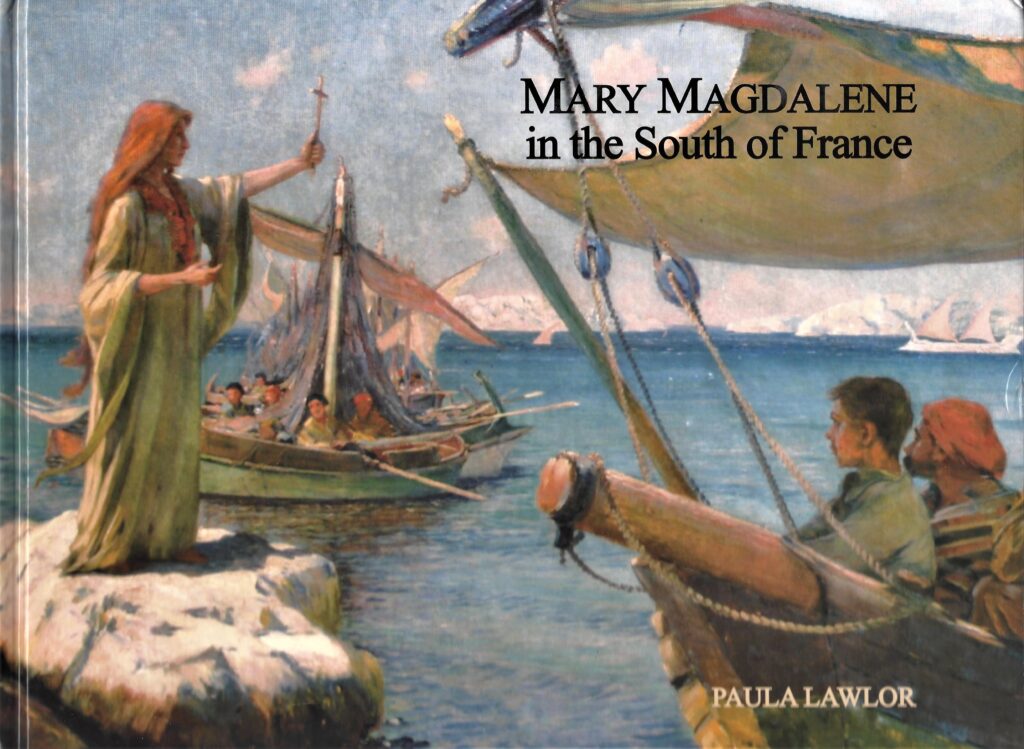
The Cave
Mary Magdalene retired to a cave in the mountains called la Sainte-Baume, 20 km from Saint-Maximin-la-Sainte-Baume, near Aix-en-Provence, where she gave herself up to a life of penance for thirty years. Martha went on to Avignon and Tarascon.
Although some think that Magdalene may have also continued to teach and heal from the cave and surrounding area. Mary means “Healer,” Magdalene was from the tribe of Benjamin, the 12th tribe of Israel. The women of the 12th tribe of Israel were the spiritual healers. They established a school that honoured the teachings of the Magi and were known as the Sisters of the Emerald Fire. It is thought that the Mary’s brought the healing knowledge of essential oils to southern France. Provence is famous for growing fields of lavender, jasmine, rose, and other crops that perfume the air and are harvested for their essential oils. Mary is often depicted with her alabaster jar of perfume.
This mountaintop cave next to the monastery, is a 50 minute hike from the car park through an ancient forest. The Dominican monks have been the guardians of this sanctuary since 1295. Local tradition holds that the cave long ago served as a shrine for pagan fertility rites and endures as a pilgrimage site for those seeking feminine spirituality. Two relics of Magdalene, a lock of hair and the presumed end of a tibia, dark with age, lay in a gilded reliquary. Martha went to Avignon and Tarascon.
The Hotellerie (or Hostelry in old English) of the Sainte Baume is a modest restaurant and a hotel which is run by the Benedictine Sisters of the Sacred Heart of Montmartre is located on the edge of the forest, at the foot of the mountainous Massif de la Sainte Baume. From the parking area, there are two paths that lead to the grotto. The pilgrimage path taken since the 5th century by Kings, Popes, Saints and ordinary people to the grotto is through the ancient forest of hickory, oak, linden and European yew, some of which all well over a thousand years old.
The cave is located just to the east of Plan-d’Aups-Sainte-Baume and is known as Grotte de Sainte-Marie-Madeleine (Grotto of Saint Mary Magdalene), 83640 Plan-d’Aups-Sainte-Baume, France.




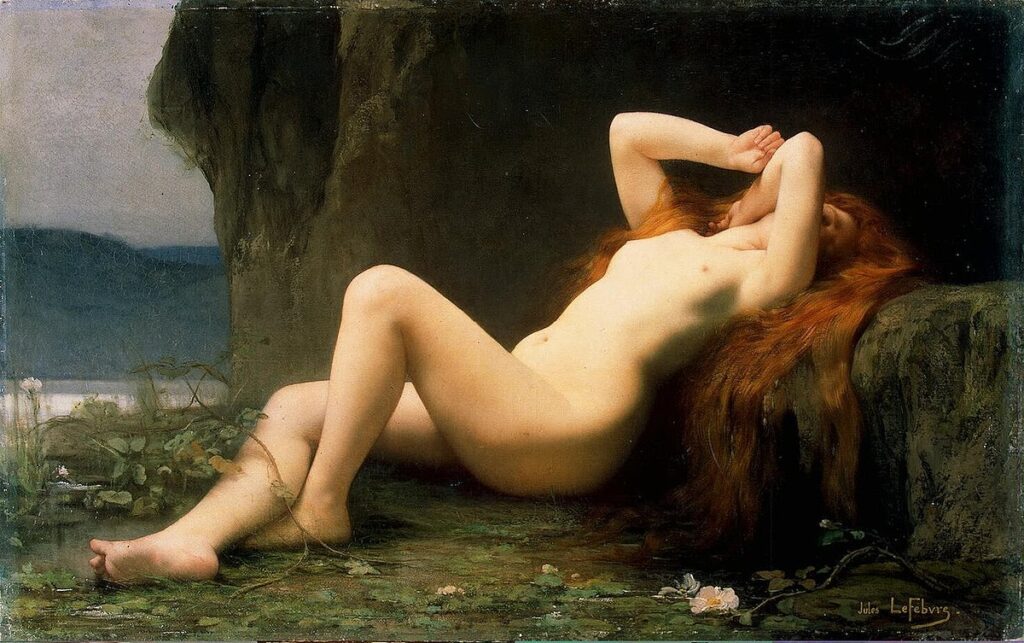
Basilique Sainte-Marie-Madeleine, Saint-Maximin-La-Sainte-Baume
The Basilique Sainte-Marie-Madeleine considered to be the most beautiful and largest Gothic edifice in Provence, was built shortly after the hidden tomb of the saint was discovered in 1279 by Charles II (soon to become King of Albania, Prince of Salerno, Prince of Achaea, Count of Provence and Forcalquier and Count of Anjou). Five centuries later, however, it was severely damaged by supporters of the French Revolution. Despite this damage, both the tomb and a relic of St Mary Magdalene’s skull were saved. These relics can be visited within the crypt of this church. The skull is paraded around the town each saint’s name day on July 22, with other relics from churches around Europe. Saint Maximin la Sainte Baume is a commune in the Var department in the Provence-Alpes-Côte d’Azur.
Basilique Sainte-Marie-Madeleine (Basilica of Saint Mary Magdalene), Place de l’Hôtel de Ville 83470, Saint-Maximin-La-Sainte-Baume, France.

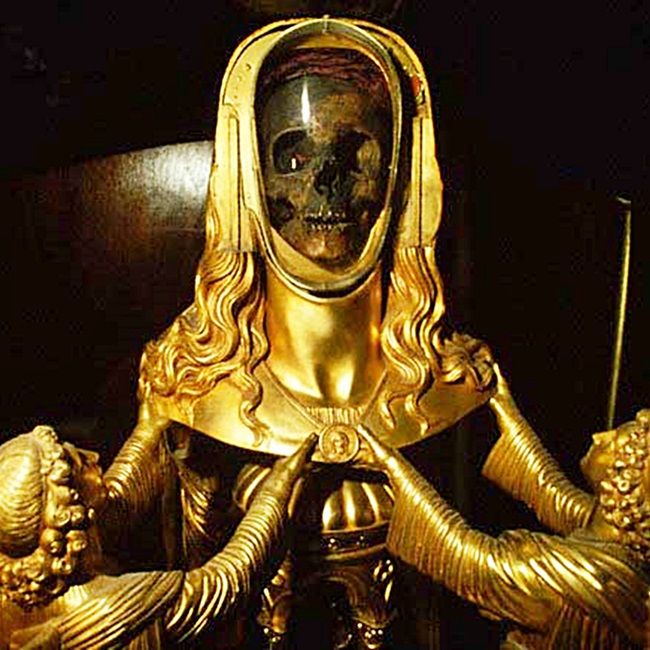

Basilique Sainte-Marie-Madeleine, Vézelay
Tradition holds that St Mary Magdalene was originally buried in the Church of St Maximin in the present day French city of Saint-Maximin-La-Sainte-Baume. In the 8th century her remains were unearthed and transferred to Vézelay, France. Five centuries later the Charles II, claimed to have found her original tomb in St Maximin. In 1281 he was able to obtain official recognition of these relics. As a result, the shrine in Vézelay lost its prominence. Then in the 16th century the relics that remained in Vézelay were burned by French Huguenots. Presently only an empty tomb and a few small relics remain within this church, located in the Carolingian crypt.
Basilique Sainte-Marie-Madeleine (Basilica of Saint Mary Magdalene) 2 Route Asquins, 89450 Vézelay, France.
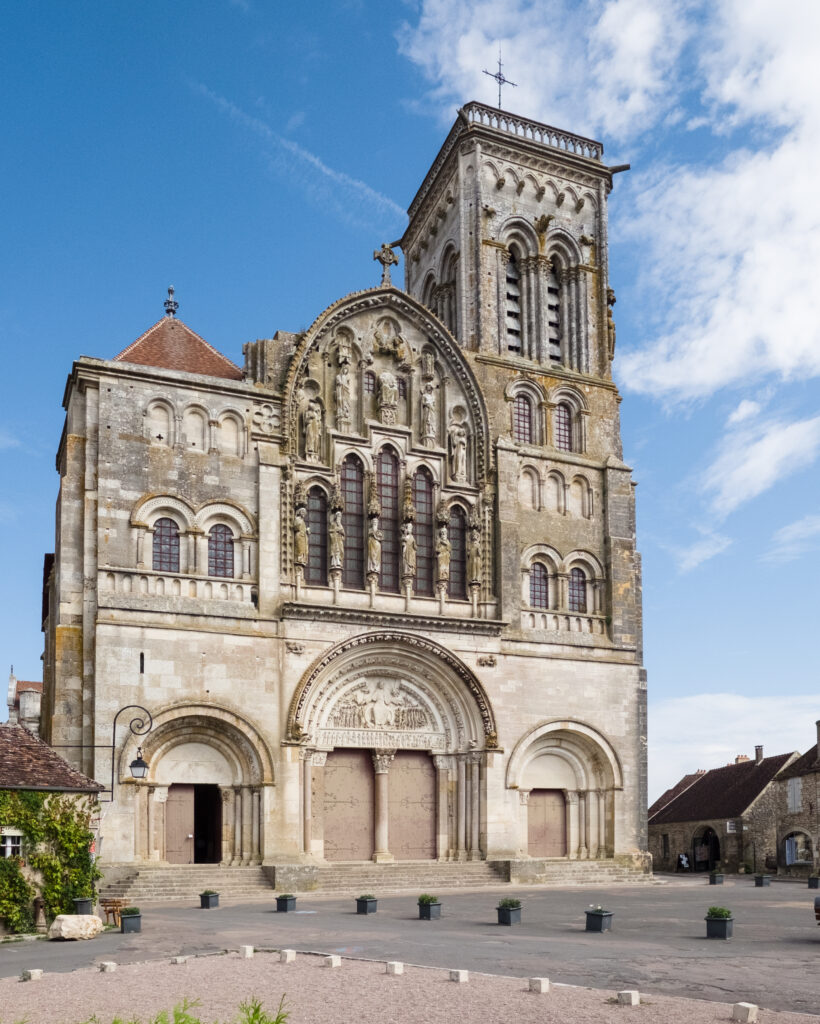
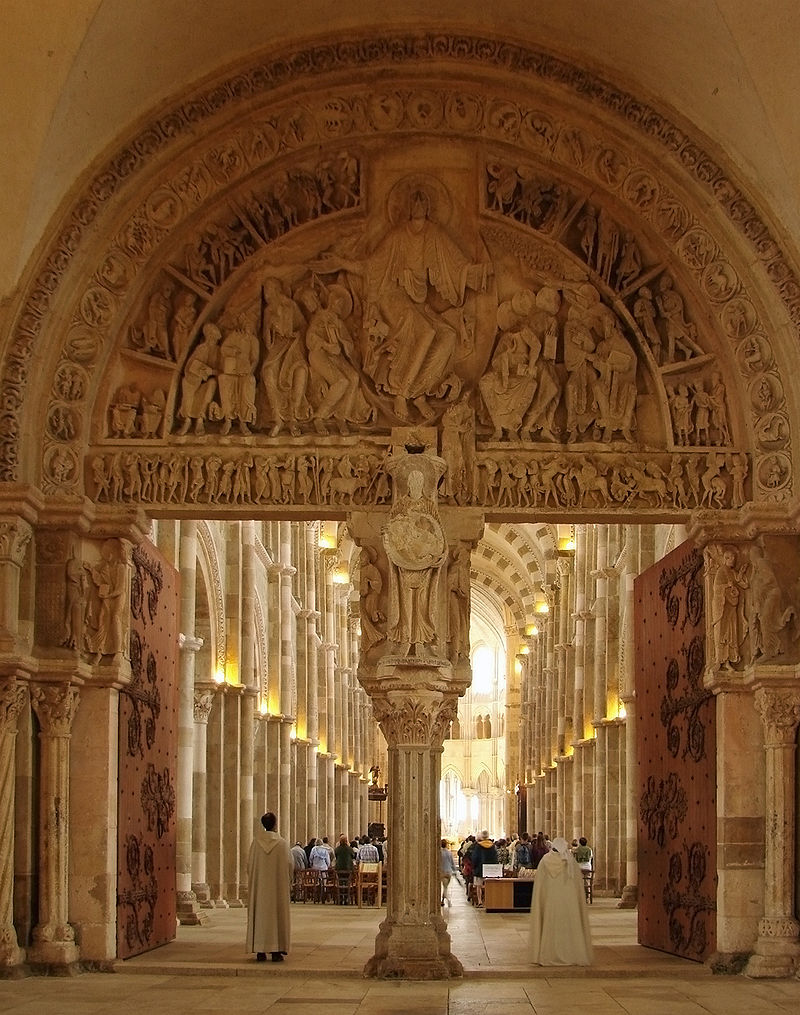

The Furta Sacra (“holy theft”) in the Church of Sainte-Marie-Madeleine, article from thepilgrimsguide.com;

Changes to the Legends of Furta Sacra. According to earlier legends in the eleventh century, Mary Magdalene’s relics had either “simply appeared miraculously in the crypt tomb” at Vézelay or had been brought back by an eighth- or ninth-century monk returning from a pilgrimage to Jerusalem. In this version, the Vézelay monastery possessed the relics of Mary Magdalene before the reign of Geoffrey (1037–50). However, oddly, the presence of the relics was first documented in 1050. This was the moment when Mary Magdalene started to gain a reputation as a penitent sinner and became, along with important and renowned saints including the Virgin Mary, Christ, Peter, and Paul, patron of the monastery. Reflecting the trend among monasteries and the popularity of the saints, the legend of the holy theft of Mary Magdalene evolved during the eleventh and early twelfth centuries to glorify Vézelay’s newly adopted cult and to legitimise the purported relics as “really” belonging to this patroness. Monasteries at that time tried to attract visitors to the church by adding to the value of the relics through the embellishment of legends into furta sacra.
According to a new legend that was “elaborated and perfected during the course of the twelfth century,” Count Girard of Burgundy and Abbot Heudo of Vézelay sent a monk named Baidilo on a mission to Provence to acquire the relics (see Fig. 2 for an illustration of the legend). Baidilo was commissioned to carry out the furta sacra because Provence had been overrun by the Saracens. In describing Aix-en-Provence as a city full of death and destruction, the monks justified the holy theft as a reasonable action. The legend also describes the monk finding Mary Magdalene’s relics “incorrupt and giving off a fragrant odor.” The perfect condition of the relics would certainly highlight the sanctity and power of the saint to the medieval believers. Furthermore, while he was bringing the relics back to Vézelay, the monk saw a vision of the saint, which assured him that his act of furta sacra had her full approval. People in the Middle Ages believed that the saints watched over their relics and accompanied the possessor on their journey, offering protection if he or she had acquired them legitimately.18 Therefore, the monk’s vision implies that Mary Magdalene approved of the holy theft, and that she desired to move to Vézelay. Thus, the monk created a signal of approval of his acquisition of the relics, and in so doing he manipulated the public to believe that he had spiritual power that enabled the holy theft.
Reasons for the Holy Theft. Despite the rationalization of the holy theft by relating this action with spiritual significance, monetary value may have also motivated the church to acquire the relics. Because the main purpose of pilgrimage is the veneration of relics, and because Vézelay was the location of the relics of a saint with great spiritual power, the city became an important pilgrimage site. At such sites, visitors pray to the saint and donate their money to the church, contributing to its monetary development. The donated money further allowed the abbey to have profitable landholdings in the local area, and the pilgrimage trade helped not only the economy of the monastery but also the economy of the surrounding town. Therefore, because the Church of Sainte-Marie-Madeleine promoted their acquisition of the relics of Mary Magdalene, the church transformed into one of the leading pilgrimage sites of Western Europe in the twelfth century, resulting in its own monetary prosperity. The fact that Vézelay and its furta sacra legend made their way into The Pilgrim’s Guide, as cited above, is a testament to the success of this rationalising and advertising tactic – the relics and the accompanying legend did attract pilgrims, and with them their offerings, to Vézelay.

San Giovanni Battista dei Fiorentini, Rome
A relic (bone) of St Mary Magdalene’s foot rests in a shrine to the left of the main sanctuary of San Giovanni Battista dei Fiorentini in Rome. This church is just east of the Vatican, next to the Tiber River and the Corso Vittorio Emanuele.
San Giovanni Battista dei Fiorentini (St John the Baptist of the Florentines), Via Acciaioli 2, Rome, Italy.
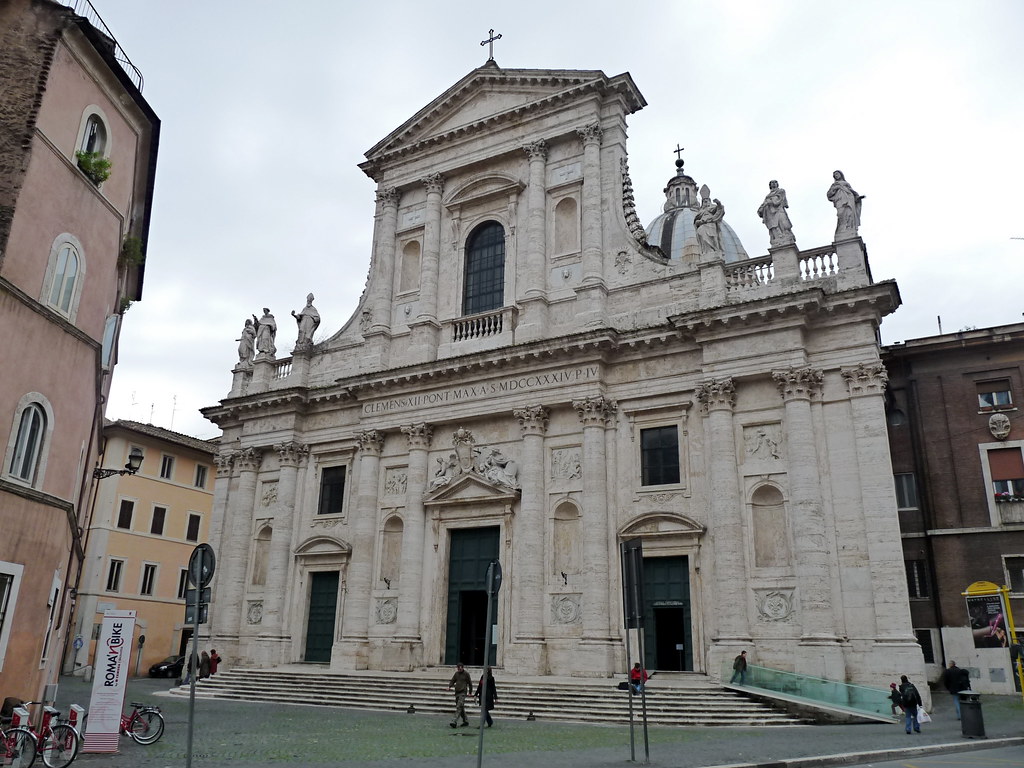
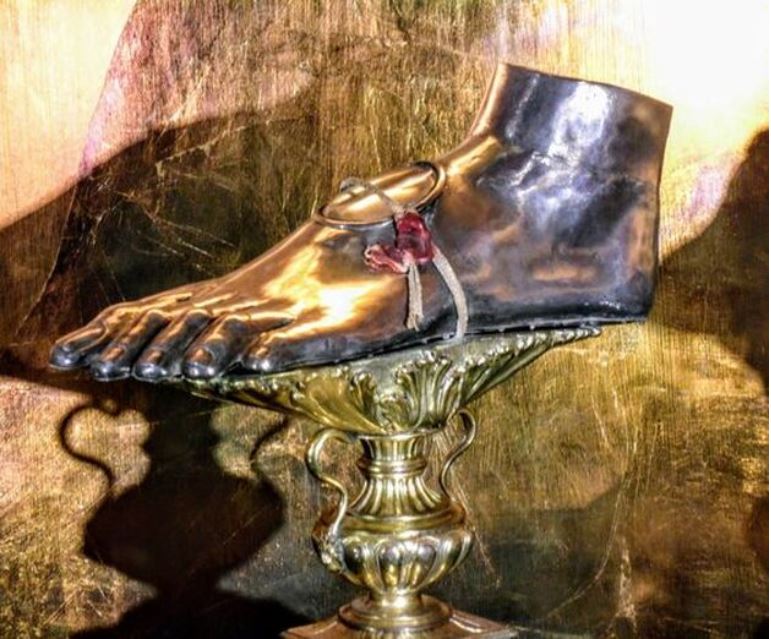
Simonopetra Monastery, Mount Athos, Greece
Among the many holy relics of Simonopetra Monastery on Mount Athos is the left hand of the Myrrh-bearing woman, St. Mary Magdalene. It is the most sacred treasure of Simonopetra. This hand is incorrupt, exudes a beautiful heavenly fragrance, gives off a bodily warmth as if it is still living, and works many miracles. Because of these many miracles, St. Mary Magdalene is held with great reverence by the monks of Simonopetra, who consider her to be the second foundress of the Holy Monastery.


Metropolitan Museum of Art in New York City
Mary Magdalene’s tooth is on display at the museam.

A complete version of The Gospel of Mary Magdalene
Mary Magdalene has perennially intrigued western culture, yet her interest has peaked in the last generation because of the parallel interest in the Gnostic Gospels. No longer just a redeemed sinner or sensuous projection for artists, Gnosticism revealed a Mary Magdalene who was a spiritual visionary, a religious leader, and perhaps the main disciple of the risen Christ. In the Nag Hammadi library’s Dialogue with of Savior, she is proclaimed as “the woman who understood The All.”
The most popular narration of Mary Magdalene today is the Gospel of Mary (even though its discovery is well over a century old). In this scripture, Mary shares in a mystic vision with Jesus concerning the infinite domains. She moreover comforts and leads the other apostles, although not without conflict. Unfortunately, much of the beginning and middle are missing from this esoteric writing.
In The Pre-Nicene New Testament, Robert M. Price adeptly reconstructs the entire Gospel of Mary, utilising the theologies and literary devices of Middle Platonic Christians such as the Valentinians and Sethians. He restores the text by taking the natural trajectory of two of the most prevalent Gnostic myths—the ascension of the soul through the heavenly spheres guarded by malevolent Archons, as well as the mysteries imparted by a godlike hierophant to his inner circle of disciples.
Price explains that the Gnostic notion of divulging the ethereal map leading to the Eternal realm derived from “Babylonian astrology and Mithraism, but it was no doubt made real by the visions of ascetics who, alone in their desert cells, strove mightily against the demons of temptation. We read of such warfare in ‘The Life of Saint Anthony’, for example. If one faces demonic opposition already in the visionary ascent before death, it is reasonable to assume an externalized version would await the ascending soul afterward. The lore of Merkabah mystics tells us so, too, where visionaries recounted assaults by angels as they sought the throne room of God on high.”
Price summarizes Mary’s role this scripture as “a symbolic figurehead for Gnostic and other sects who claimed her as their authorization. She clearly takes the place of the divine consort who resurrects the dying god in various salvation myths, the Christian version of Cybele, Isis, Ishtar, and Anath. But she may represent an early historic apostolic figure, as well. In any case, we must assume her place was important enough that even her enemies could not simply omit her from their own gospels, though they were happy to denounce her as a demoniac and whore, making her little more than Celsus had: an untrustworthy, ‘hysterical female’ whose recorded teaching no one ought to credit.”
The marginalization of Gnostic luminaries in the Bible certainly goes beyond Mary Magdalene, as seen in the negative depictions of Thomas, John the Baptist, Simon Magus, and even Saint Paul to an extent.
Price’s reconstruction is presented in italics. His segmenting of the text in chapters is as presented in The Pre-Nicene New Testament.
THE GOSPEL OF MARY MAGDALENE
(Translation and permission granted by Robert M. Price)
1
On the third day after his suffering, the Savior appeared to his disciples, who were all gathered at the Mount of Olives. And when he had quieted their doubts, he began to teach them as follow: “My brothers and sisters, long have I wished to make known to you the deeper truths which you must know if your souls are to find salvation, but till now your ears were prevented from hearing them. For your hearts were one with that world unto which I died and from which I now have been forever raised. And your minds have been raised with me so that they are now able to comprehend what you could not abide hearing before. I have wrested you from the grasp of the archon of this world that you hear the worlds a disciple ought to hear from his teacher and a mortal ought to hear from his God.”
2
And Peter grew bold and asked, “Lord, tell us concerning the Father. Who is he? And why did he send you? And the Savior answered, “Simon, you are blessed, for you do not suppose you know that which must be a mystery to all flesh. For my Father is not the maker of the world of matter which you see around you, a world that is filled with death and despair but which, seeing with the fever of the flesh and its desire, mortals, deem full of every delight and comfort and so waste their lives in pursuit of illusions. NO, all these things only enslave mankind to the material Creator. My Father is exalted high above this one, whence he is called the Most High God. For no one speaks of anything as ‘the highest’ unless there be others below it.
3
And you mortals are partly his creations, in that has fashioned the body from unclean foulness. But you souls he has stolen from the Light-World of my Father. With them, he has imparted to your flesh what has the appearance of life, being but a shadow of the life you knew in the Pleroma of the Most High. Here you bide in ignorance, never knowing either your origin or your destiny. And for lack of that knowledge, you perish and are reborn into new bodies time and again, so long as the way out is hidden from you. And that is why the Father sent me into the world in the likeness of your flesh, that I might make known these truths to you.”
4
Andreas asked, “O, Savior, what shall we then make of the things you said to the multitude, which differ not so very greatly from what they have heard from their scribes?” And the Savior answered, “Let them be, Andreas. Some of them may yet discover they harbour the spark of light within them and then they will seek what I tell you know. Others cannot, but my Father loves them, and he has bidden me to impart to them such wisdom as they can grasp to mitigate the harshness of him who created this world and gave the commandments to the legislator. You will find nothing false in them, and yet they are mute as to the salvation of your spirits.”
5
Levi asked the Savior, “My Lord, what then of the sufferings you endured and the death you died?” And the Savior answered, “I suffered and I did not suffer. I died and I died not. All the evil archons wrought was to free me of the shameful clothing I had assumed for the sake of my sojourn in this world. I long bade you keep my identity secret, but the Powers knew, and finally they had me crucified, not suspecting they would be the very cause of my deliverance. And the reason I suffered these indignities was for the sake of those without true spirits, that being lifted, I might draw them away from the Creator and bring them within the haring of the news of me that you will proclaim, Many of them shall be called, though few chosen.”
6
Salome asked him, “What shall be the end of all things, and will only a few be saved?” The Savior replied, “O handmaid of my Father, your curiosity is as great as that of Sophia, who desired to peer behind the veil of the Pleroma. Amen, I tell you: the news of the Kingdom of Light will be preached throughout this sublunar world and in the world below, and those who hear will escape the wheel of death and birth when they die. Their souls shall ascend, and if they are wise, they shall pass by the rulers of the heavenly spheres. And once the elect have been redeemed, the matter that imprisoned them will fall back into the state of virgin clay with no likeness impressed upon it. Finally, all the creation of the Creator will return to lifelessness.”
7
Simon Peter asked, “Will matter then be destroyed or not?” The Savior said, “All nature, all formations, all creatures exist in and with one another, and they will be resolved again into their own roots. For the nature of matter is resolved into the elements of its particular nature. He who has ears to hear, let him hear.” Peter said to him, “Since you have explained everything to us, tell us this also: What is the original sin of the world? The Savior said, “There is no sin per se, but it is you who make sin when you perform the acts that partake of adulteration, which alone is properly termed ‘sin’. That is why the Good came into your midst, to purify every nature, in order to restore it to its original state. Then he went on, saying, “That is why you grow ill and die, for the spirit ever seeks escape from admixture with the body of death of one who has not yet enlightened. He why understands, let him understand. Matter gave birth to a passion without equal, which emerged from an abomination against nature. From this arose a trembling throughout the whole body. That is why I once said to you: ‘Be of good cheer!’ and if you should grow disheartened, take heart, surrounded by the various forms of being. He who has ears to hear, let him hear.”
8
When the Blessed One had thus spoke, he saluted them all, saying, “Peace to you! Receive my peace in your hearts. Watch out that no one lead you astray saying, ‘Lo there!’ or ‘Lo there!’ For the Son of Man is within you! Follow in his path! Whoever seeks him will find him. So go from here and proclaim the news of the kingdom. See that you stipulate no rules beyond those I ordained for you, and not promulgate a law code like the legislator did so that you will above being tied in knots with it.” After saying these words, he left. But they mourned the loss of him and collapsed in tears, asking, “How are we supposed to go to the nations and proclaim the news of the kingship of the Son of Man? I they had no mercy on him, they will hardly spare us.”
9
Then Mary rose to her feet, saluted them all, and spoke to her brothers: “Stop your weeping! Do not mourn or waver, for his favour will accompany you to protect you. NO, instead, let us extol his greatness, seeing that he has trained us and transformed us into men.” When Mary said this, she moved their hearts to repentance and they commenced to discuss what the Savior had said.
10
Peter said to Mary, “Sister, we are aware of how the Savior loved you more than any other woman. Tell us the things the Savior said that you remember, the things you know but we do not, that we have never hard.” Mary answered them, saying, “What is hidden from you, I will surely disclose to you.” And she commenced to speak to them these words: “I,” she said, “even I, beheld the Lord in a vision, and I said to him, ‘Lord, I behold you today in a vision!’ He answered and said to me, ‘Blessed are you for not quailing at the sight of me! For where the mind is, there too will be the treasure.’ I answered to him, ‘Lord, how does the visionary see the vision: with the soul or with the spirit?’ The Savior answered, saying, ‘It is not with the soul that one sees, nor yet through the spirit, but by the mind which lies between the two. This is what sees the vision, and it is by that means I am speaking with you now, Mary.’
11
“And I asked him, ‘O Lord, we know that you will leave us to ascend to the realm of light whence you first came. And it is there we wish to join you, that we may no longer be orphans in this world. But we know not the way where you are about to go. Do not hasten to depart without revealing the path to the Father that every soul must tread it if would leave the unwholesome mixing with matter in the day the flesh loosens its grip.’ And the Savior said to me, ‘O Mary, I shall show you the way you must go, so in the day when your brothers ask you these things, you will know what I required for salvation, that we may be rejoined in the House of Light on high, whence all the souls of the elect first came. First, know this: the way is simple but not unbarred. It winds through seven heavenly spheres, and each of these is jealously watched by its guardian and toll collector, ever vigilant to receive his due. When I myself descended from the pleromatic light, I disguised myself, donning the likeness and nature of each archon and of his realm so that I passed freely among the denizens thereof. And I changed vesture again and again with each world I passed through, like the actor who changes vesture with every new scene. Presently, as you know, I shall return whence I came and I must strip off each outer layer, even seven bodies, each of a different substance, leaving each robe hanging limp in the hands of the archons ruling each sphere. You and your brothers will not be able to easily evade the craft of the archons. But through they are vigilant it is not great thing to outwit them, provided one knows which words will overcome them.’
12
“And withal, he showed me in my vision the soul of one of the redeemed, one knowing of his origin and destiny. That soul arose as a spark from a campfire into the cold night. Having sloughed off the smothering body of flesh, it continued to rise until at length the soul came to the first of the Powers, even him who is named Darkness, who spoke thus to him: ‘Proceed no farther, transgressor!’ And the soul answered, ‘Why? In what I have I sinned against you?’ And Darkness replied, ‘In that my kingdom is a kingdom of darkness and no one who lights the torch of knowledge I permitted here! Now let us extinguish your painful light that all may return to the peaceful sleep of ignorance.’ And that soul answered, ‘No, O Darkness, but those who sleep your sleep do so only because they are first ignorant of your guile! But of this the Savior has warned me!’ And thus did it elude the Power of Darkness, rejoicing to be free from another nature, that of worldly ignorance.
13
“After a time, that soul passed into the sphere of the archon Desire, that which causes the natures to mix and which seeks to awaken in the fleeting soul fondness for those false delights it left behind on earth so that I might return there. And Desire himself was there in an instant, speaking to it, saying, ‘Who are you? And whence come you?’ And the soul said, ‘I am of the seed of the Living Father and do not belong to this world. Hinder me not, as I seek but to return to the place whence I first came!’ Thus he spoke to it. And Desire said to that soul, ‘I never saw you descending, but now I behold you ascending! What makes you lie? You are mine!’ The soul replied, saying, ‘I saw you, but you did not see me or notice me. You saw nothing but my vesture and you did not know me.’ When it had said these worlds, it fled away in great joy.
“Next it encountered the third Power, which is named Ignorance. It interrogated the soul and it said, ‘Where do you think you are going? Do you deserve to enter heaven? In the chains of wickedness, you are captive. You, a prisoner, dare not judge me!’ And the soul replied, ‘And who are you to judge me so? I have no condemned you. In truth, I was chained to the flesh, though now I am free. I was not recognized. But I have come to recognize that the All is being deconstructed, both the earthly elements and the heavenly ones.’
When the soul had triumphed over the third Power, it ascended and beheld the fourth Power, which assumed seven likenesses. The first of the likenesses is Darkness, the second Desire, the third Ignorance, the fourth is the Terror of Death, the fifth is the Reign of the Flesh, the sixth is the deluded ‘wisdom’ of the flesh, the seventh is the vengeance of Wisdom. These are the Seven Wrathful Powers. They question the soul: ‘Whence you come you, murderer? Where are you headed, space traveller?’ For its part, the soul answered, saying, ‘What held me captive has indeed been killed and what enveloped me has been defeated, and my desire has been extinguished and ignorance has expired. In the midst of a world, I was set free from a world, and freed from a pattern of death; I received deliverance from a heavenly prototype, deliverance from the chain of oblivion which passes away. Henceforward, I shall win my way to that repose where no one speaks of time, of season, of age’.”
14
After these words, Mary was quite. She had reached the end of what the Savior had said to her. But Andreas spoke up saying to the brothers, “Make what you will of what she has said. I, for one, do not believe the Savior said this. For indeed, these doctrines are full of bizarre notions.” Peter answered and said the same thing. He challenged them about the Savior: “Did he rally speak with a woman without us knowing it? And in secret? Are we now supposed to change direction and all be taught by her? Did he prefer her to us?” At this Mary cried and said to Peter, “My brother Peter, what is it you suppose? Do you think I made this up in my imagination? Are you accusing me of lying about the Savior?” Levi answered, saying to Peter, “Peter, you have always had a temper. Now I am watching you fight against the women as if they were our enemies. But if the Savior himself made her worthy, then really who are you to dismiss her? Surely the Savior knows her well. After all, he loved her more than us. Instead, we ought be ashamed of ourselves and don perfect manhood and secure him for ourselves, as he ordered us, and proclaim the news, promulgating no other rule or law in addition to what the Savior himself said.” When Levi said this, they mustered their courage and they commenced to go out to proclaim and to announce the news.
Book of Mary
Rennes-le-Château, Refuge de l’Apocalypse : Portail sur d’Autres Dimensions by Elizabeth Van Buren